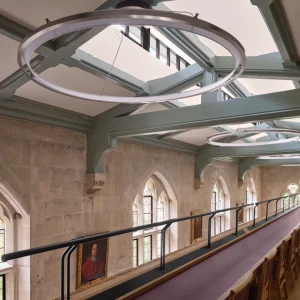Founded in 1881, the hospital on a 37-acre campus has been vacant since 2008. The most historic portion of the campus is the series of buildings completed after a 1946 master plan created by widely-known and well-respected modernist architect, the first director of the Bauhaus in Germany, Walter Gropius. Though officially attributed to Chicago firms, most of the buildings built from 1946 to 1959 were designed with a strong influence by Gropius.
The Chicago 2016 Olympic organizing committee advocated a plan to construct the Olympic Village on the Michael Reese site, as a reuse project. But the plan was dropped and the site was earmarked for a new athletes’ village.
Only one of the Gropius-designed blocks on the 29-building campus has managed to be prevented from demolition – the 1950 Singer Pavilion, which the local authorities have singled out as a potential candidate for redevelopment.
Walter Gropius was the founder of Bauhaus school in Germany that combined crafts and the fine arts, and was famous for the approach to design that it publicized and taught. The Bauhaus style became one of the most influential currents in modernist architecture and modern design.





